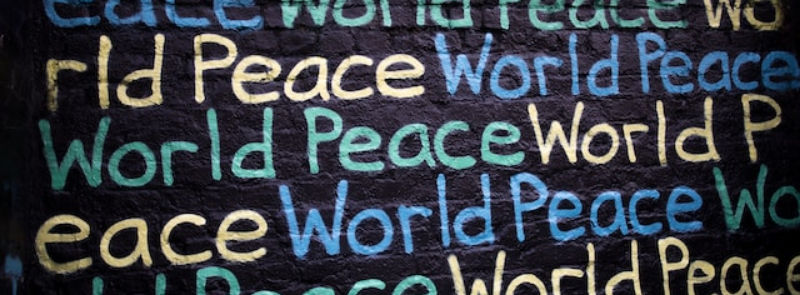
When It Occurs
Every September 21st
Official Website
Timeline
Days Passed (244)
# Hashtags
#InternationalDayOfPeace #WorldPeaceDay
The International Day of Peace, also recognized as World Peace Day, is observed annually on September 21st. Established through a unanimous United Nations resolution in 1981, the day aspires to cultivate a more harmonious world for everyone. On this occasion, the United Nations calls for a global cessation of hostilities for 24 hours, known as a ceasefire.
This day advocates for people of all races and ethnicities to promote the significance of global peace. Across the globe, individuals and organizations engage in activities and host events aligned with a designated theme for the year. The Peace Bell is ceremoniously rung twice annually: on the first day of spring, during the Vernal Equinox, and on September 21 to commemorate the International Day of Peace.
History and Background
- Origins: The International Day of Peace was established in 1981 by a unanimous United Nations resolution. The first observance was held in September 1982.
- Founding Resolution: UN General Assembly Resolution 36/67 established the day, aiming to commemorate and strengthen the ideals of peace.
- Permanent Date: In 2001, the General Assembly adopted Resolution 55/282, which established September 21 as the annual date for the International Day of Peace. The resolution called for the day to be observed as a period of non-violence and cease-fire.
Objectives and Significance
- Promoting Peace: The day focuses on promoting peace and reducing conflicts globally.
- Raising Awareness: It raises awareness about the importance of peace and the efforts needed to achieve it.
- Non-Violence and Cease-Fire: The day is marked as a global cease-fire day, urging combatants worldwide to lay down their arms.
- Human Rights and Development: Emphasizes the connection between peace and fundamental human rights, sustainable development, and humanitarian relief efforts.
Themes
Each year, the International Day of Peace is observed with a specific theme that focuses on various aspects of peace and conflict resolution. Themes in recent years have included:
- 2023: Actions for Peace: Our Ambition for the #GlobalGoals
- 2022: End Racism. Build Peace.
- 2021: Recovering better for an equitable and sustainable world.
- 2020: Shaping Peace Together.
Activities and Celebrations
- Peace Bell Ceremony: The UN Headquarters in New York holds a special ceremony where the Peace Bell, donated by Japan, is rung. The bell is cast from coins donated by children from all continents.
- Educational Events: Schools, universities, and educational institutions host events, discussions, and workshops on peace-related topics.
- Art and Culture: Art exhibitions, music concerts, and cultural events are organized to promote the message of peace.
- Community Activities: Local communities engage in various activities such as peace walks, parades, and public gatherings.
- Social Media Campaigns: The day is promoted through social media campaigns using hashtags like #PeaceDay and #InternationalDayOfPeace to spread awareness and encourage participation.
- Moment of Silence: A moment of silence at noon in every time zone to reflect on peace and remember those affected by conflict.
How to Participate
- Educational Programs: Participate in or organize educational events that teach about peace, conflict resolution, and non-violence.
- Community Engagement: Join or host local peace-related events such as community dialogues, peace marches, or cultural events.
- Advocacy and Fundraising: Support organizations working on peacebuilding, conflict resolution, and humanitarian efforts through donations or volunteer work.
- Promote on Social Media: Use social media platforms to spread messages of peace and share information about events and activities.
- Personal Reflection: Take time to reflect on how to contribute to peace in your daily life, whether through acts of kindness, mediation, or promoting understanding and tolerance in your community.
Global Participation
- United Nations Involvement: The UN plays a central role in promoting and organizing activities around the International Day of Peace.
- Non-Governmental Organizations (NGOs): Numerous NGOs participate by organizing events and activities that promote peace and non-violence.
- Educational Institutions: Schools and universities around the world hold events to educate students about the importance of peace.
- Governments and Leaders: Many governments and political leaders issue statements and participate in activities to show their commitment to peace.
Resources and Support
- UN Resources: The UN provides materials and guidelines for observing the day, including educational resources, event ideas, and promotional materials.
- Peace One Day: An organization that works to promote and support the International Day of Peace through global campaigns and events.
- Local Peace Organizations: Many local and regional peace organizations offer resources, support, and collaboration opportunities for observing the day.
Notable Observations and Examples
- Global Ceasefire: In some instances, warring parties have observed ceasefires on International Day of Peace, providing a temporary respite from conflict.
- Grassroots Movements: Grassroots movements and community organizations often play a crucial role in promoting and celebrating the day through local initiatives.
- Youth Involvement: Increasingly, young people are getting involved in peacebuilding activities, reflecting a growing recognition of their role in creating a peaceful future.
Key Messages
- Peace is Possible: The day reinforces the idea that achieving global peace is possible through collective efforts.
- Everyone's Responsibility: Peace is a responsibility that everyone shares, from individuals to global leaders.
- Interconnectedness: Highlights the interconnectedness of peace with human rights, development, and environmental sustainability.
The International Day of Peace serves as a reminder of the importance of peace and the ongoing efforts needed to achieve it. It provides a global platform for individuals, communities, and nations to unite in their pursuit of a more peaceful and harmonious world.


